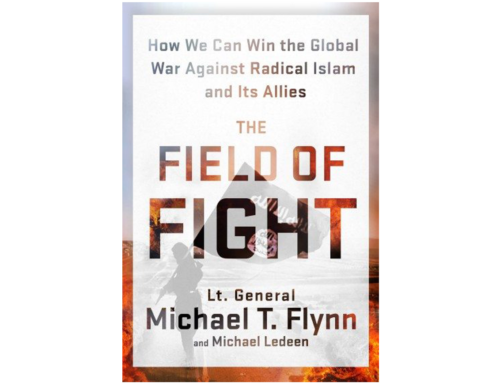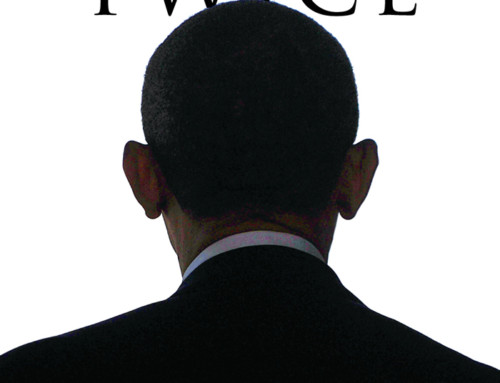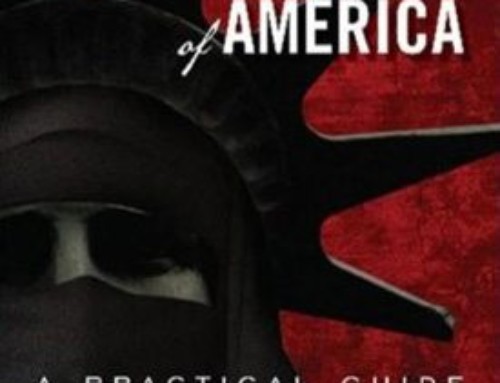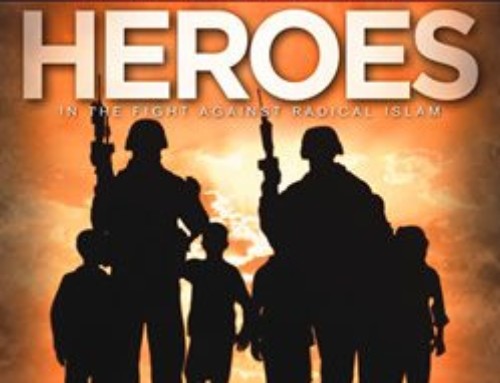We have found no credible evidence that Iraq and al Qaeda cooperated on attacks against the United States.
Statement No. 15 9/11 Commission Report
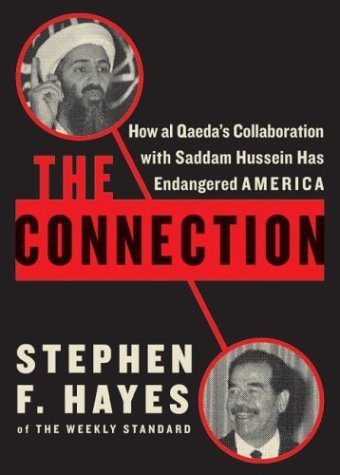 In the midst of all the pro-Kerry media having gotten into a lock-step rant over the 9/11 commission report, into the breach comes the new Stephen Hayes book, The Connection: How al Qaeda’s Collaboration with Saddam Hussein Has Endangered America. Both the chairman and vice chairman of the 9/11 commission, realizing that they ve now made it more difficult for the President to wage this war on the terrorists, have already made statements distancing themselves from their own staff’s report, explaining that the commission only focused on the 9/11 attack and not on the overall connection between bin Laden and Hussein. You may not have read Chairman, Tom Kean’s disavowal since it was no doubt not front-page in your newspaper. But thanks to Hayes, you can be armed to deal with your friends and coworkers who feel they now have their smoking gun and who faithfully believe John Kerry, Michael Moore, and the Bush-lied coalition who continue to assert that the Iraq war has nothing to do with fighting al Qaeda.
In the midst of all the pro-Kerry media having gotten into a lock-step rant over the 9/11 commission report, into the breach comes the new Stephen Hayes book, The Connection: How al Qaeda’s Collaboration with Saddam Hussein Has Endangered America. Both the chairman and vice chairman of the 9/11 commission, realizing that they ve now made it more difficult for the President to wage this war on the terrorists, have already made statements distancing themselves from their own staff’s report, explaining that the commission only focused on the 9/11 attack and not on the overall connection between bin Laden and Hussein. You may not have read Chairman, Tom Kean’s disavowal since it was no doubt not front-page in your newspaper. But thanks to Hayes, you can be armed to deal with your friends and coworkers who feel they now have their smoking gun and who faithfully believe John Kerry, Michael Moore, and the Bush-lied coalition who continue to assert that the Iraq war has nothing to do with fighting al Qaeda.
After you read Hayes book, you may also want to cut this review out, and put it in your wallet so that you’re fully armed for your next dinner party. This way, when someone will inevitably say something to the effect, “I don’t think Iraq had anything to do with terrorism;” you can unsheathe your weapon and shred their position. The following is only a partial list of known undisputed, highly corroborated links we have so far, described fully and in very non-partisan and readable prose by Hayes.
The First Trade Center Attack Was Very Likely an Iraq-Sponsored Operation:
Abdul Rahman Yasin, the son of an Iraqi father living in Baghdad, entered the U.S. on an Iraqi passport in June of 1992. At 12:18 p.m. a van filled with explosives and cyanide exploded in the parking lot of the World Trade Center, killing six and injuring over 1,000. (If one tower had collapsed on the other, the loss of life would have dwarfed 9/11.) He was captured in New York and later admitted to mixing the chemicals for the bomb. At first, because he seemed so cooperative in providing details of the plot, and disclaimed any significant role in the bombing, the FBI released him. On March 5, 1993 Yasin fled to Baghdad. Documents captured in the Iraq war, prove he was put on an Iraqi intelligence service payroll. Yasin’s apartment in New York contained phone records which logged hundreds of calls to Baghdad.
Laurie Mylroie’s book, Study of Revenge: The First World Trade Center Attack and Saddam Hussein s War Against America, published in 2001 but before 9/11, exhaustively links Hussein to the first WTC attack and provides an excellent companion to Hayes book. No pundits who contend that Iraq had nothing to do with the first attack on the WTC have dared to debate Mylroie publicly. She points out that Arabs are notorious for celebrating anniversaries and that the attack occurred on the second anniversary of the Gulf War’s end. Hussein had been for many months continuously, in his state-run media, threatening a dramatic revenge. Further, Jim Fox, head of the FBI’s New York office at the time of the bombing, and James Woolsey, the CIA Director under Clinton, from 93 to 95, both concluded that Iraq was at least involved. She also adds that the Clinton Administration made no real effort to secure Yasin’s extradition, one of several enigmas suggesting that the administration was not keen to draw attention to anything that points to an Iraqi role in the attack.
Hayes writes, and President Bush issued (a warning) on September 20, 2001: From this day forward, any nation that continues to harbor or support terrorism will be regarded by the United States as a hostile regime and based on the regime’s support for Yasin, Iraq qualified.
The Assassination Attempt of President Bush the Elder A Terrorist Act of Aggression:
Hayes describes in vivid detail the saga of two would-be Iraqi assassins who were captured by Kuwaiti police. Their plot to kill the former president was corroborated by their independent confessions as well as numerous other sources. Although it doesn’t prove an al Qaeda link, no one, not even the pro-Kerry media, disputes the fact that Hussein was its architect. In short, the plot brands Hussein as a world-class terrorist and is arguably, like harboring Yasin described above, grounds for regime change by itself. One has to wonder if it became irrefutable that some tin-pot dictator had tried to assassinate Harry Truman, would Dwight Eisenhower not have squashed him like a bug.
Saddam’s Fedayeen Officer, Shakir, Was a Coordinator at the Final 9/11 Planning Meeting:
In January of 2000 in Kuala Lampur, Malasia, Hayes relates in impeccable detail how the Iraqi special forces officer, Ahmed, Hikmat Shakir, met the arriving flights and escorted the terrorist heavyweights who assembled there to finalize the Cole bombing and 9/11 operations. Attendees photographed there with Shakir were Khalid al Midhar and Nawaf al Hamzi, the hijackers of Flight 77 which crashed into the Pentagon. Shakir received his job as an airport greeter through the Iraqi embassy. When he met the last appointed attendee, he ushered the terrorist to a waiting limo and then jumped in, never to return to his post. Six days after 9/11 he was captured in Qatar with contact information for many al Qaeda senior members including Mahmdouh Salim (a.k.a. Abu Hajer al Iraqi) who in the mid nineties was Hussein’s main intermediary to al Qaeda. Records uncovered since Baghdad s fall reveal Shakir was an officer in Hussein’s elite Special Forces all along.
Mohammed Atta Met with Iraq Intelligence in Prague Four Times:
One assertion that the main-stream, pro-Kerry press is desperate to disprove is that the 9/11 ring leader, Mohammed Atta, met with a senior Iraqi intelligence officer, a man by the name of Ahmed Khalil Ibrahim Samir al Ani. The editors of our ethically challenged main-stream media are obviously betting that if the public were to believe the Czech intelligence reports that connect the two men on April 4, 2001, just five months before 9/11, the public would conclude that Iraq was aligned with al Qaeda. And this in turn would take the air out of the Kerry/Moore Bush-lied campaign. The hapless commission staffers gave the main-stream media another bone they so desperately hoped for. Statement #16 in the report states, “Based on the evidence available, we do not believe that such a meeting occurred.”
I caught up to Hayes, who’s much in demand these days, and asked him what he thought about the commission staffers report and what was his take on the Atta meeting. The press reporting on this has been inadequate and woefully inaccurate, Hayes told me. And the report itself is cursory and contradictory. It cites two high-level detainees who deny ties existed. But the report never says who they are or why we should believe them. Hayes book sites scores of detainees who do corroborate intelligence linking bin Laden and Hussein and, yes, even connect Hussein to 9/11.
Hayes devotes a whole chapter to how Hussein’s intelligence service operated in Prague. Both Czech and U.S. intelligence sources contend that Atta met with the senior Iraqi intelligence agent four times, twice in May of 2000. At one meeting, bank records show money transfer requests from Iraqi accounts in Prague to accounts controlled by Atta in Germany and the U.S. The final meeting in April was not witnessed by U.S. intelligence agents but was observed by Czech intelligence. The fact that the pro-Kerry opposition discounts the final meeting is one more reason why many worry that Kerry could become the Commander-in-Chief in charge of the war on terror. He continues to show a complete disrespect for our coalition members including our pro-American East European allies.
As Hayes put it, Czech intelligence officers have told me that, if anyone tells you that the meeting didn’t happen, their either fooling you or fooling themselves. Hayes not only details the meetings but, unlike his detractors in the media, he names his sources. He states that Czech Prime Minister, Milos Zeman, Interior Minister Stanislav Gross (whose agency oversees intelligence operations) Martin Palous, Ambassaddor to the United States, Mr. Kmonicek, Ambassador to the United Nations, and Jiri Ruzek, Intelligence Chief, all confirmed the April 2001 meeting.
Typical of the anti-Bush media, Newsweek’s Michael Isikoff, wrote in April of 2002, and the much-touted Prague connection appears to be an intriguing, but an embarrassing, mistake, and he quoted a senior (unnamed) law enforcement official.
It’s important to note that nothing in the commission’s report or anyone of any substance has attempted to discount the 2000 Atta/-al Ani meetings or the money transfers.
Ansar al Islam and abu Zarqawi are Bush’s Smoking Guns:
After you’ve read Hayes book, you ll be so loaded with facts to the contrary that when someone asserts that there s no evidence that Saddam Hussein was a supporter of al Qaeda, you re apt to suspend proper dinner-party etiquette. But unfortunately, in the commission’s inept staff report, there is a phrase that seems to lend some credibility for those who need to cling to this persistent falsehood. The report allows that, while there were repeated contacts between al Qaeda and Iraq during the nineties, they do not appear to have resulted in a collaborative relationship.
In asking Hayes about it, he told me that this misperception was causing him a lot of frustration because it surrounds so important an issue, that being, national security. I mean, as I say in the book, you have a telephone intercept where an Iraqi intelligence official is praising his Ansar al Islam contact and sending him a $100,000. There’s so much that we have like this that’s compelling.
The book recounts another former Iraqi intelligence agent, Abdul Rahman al Shamari, who was captured by Kurdish forces in Northern Iraq and whose highly detailed confessions make him very credible, admitted that his division of the Mukhabarat provided Ansar al Islam with weapons and remembers delivering them a payment of ten million Swiss Dinars (roughly $700,000).
Hayes writes in The Connection, that around 1998, bin Laden established a new base, called Ansar al Islam, in the northern Iraq/Kurdish province. Based on a non-aggression pact he had negotiated while based in Sudan in the early 90s, bin Laden requested and received support from Hussein on the new base. Together they recruited terrorists from around the Middle East to populate it. Hussein sent money, and arms. They both sent trusted lieutenants to operate as field commanders, one of whom was Abu Musab al Zarqawi.
Bin Laden and Hussein’s common objective was to sow terror and wreak havoc in the newly independent Kurdish region which was inside the no-fly zone and which was allied with its American protectors. Additionally, in case of the worst, Hussein offered bin Laden and his minions safe haven there. Although they did not control the region, Ansar al Islam was an island of resistance and was one of their jointly controlled bases for terrorist/jihadist operations. Before the Afghan war, they launched many successful attacks on Kurdish towns, killing innocent civilians.
It was also about this time that Hussein found religion and added religious/jihadist references to his nightly state-run media diatribes against America and the Jews. Ansar al Islam became the prototype of the ultimate terror cell. As Hayes adroitly writes, Combining the radical and the secular, rogue state and loose terrorist networks on a small-scale, precisely what American politicians from both parties had warned about for a decade.
Documents uncovered since the fall of Iraq, corroborate earlier intelligence showing that also, at about this time, Zarqawi took on a more central role in the Iraq/al Qaeda alliance. Reporting to the Iraqi Intelligence service, he received chemical weapons training, and began shuttling between Northern Iraq, Baghdad, and Herat, Afghanistan where he delivered weapons from Iraq to the Taliban and set up a chemical weapons training camp of his own. During the war in Afghanistan, Zarqawi received a severe wound on one of his legs and was able to return to Baghdad with a few dozen of his closest associates and recuperated in the Baathist regime s most primer hospital. During the run-up to the Iraq invasion, Zarqawi was commissioned to set up sleeper cells to be activated should Baghdad fall. And of course, we are witnessing his activities now in the daily attacks on our forces, the bombing of civilians, and the capture and beheading of hostages.
Additionally, Jordanians were able to prevent a Zarqawi-led attack that may have combined both conventional explosives and chemical agents. Had this attack taken place Jordanian officials have stated that by their estimates, as many as 80,000 could have been killed. Therefore, in the person of Zarqawi, we have the smoking gun, the justification for President Bush to select Iraq for regime change. Hussein was definitely allied with our mortal enemy al Qaeda and he was training and provisioning them to unleash chemical and biologic weapons on us, their common enemy.
Some of Hayes sources are unnamed for their protection. But much of his narrative cites his sources and documents. This along with his attention to detail has the effect of reinforcing the book s credibility. We can look forward to seeing much more from Stephen Hayes in the coming years because his topic the reality of penetrating the terror network – will be even more gripping than any fictional writer can hope to create. He will be an important chronicler as we head into interesting times.

